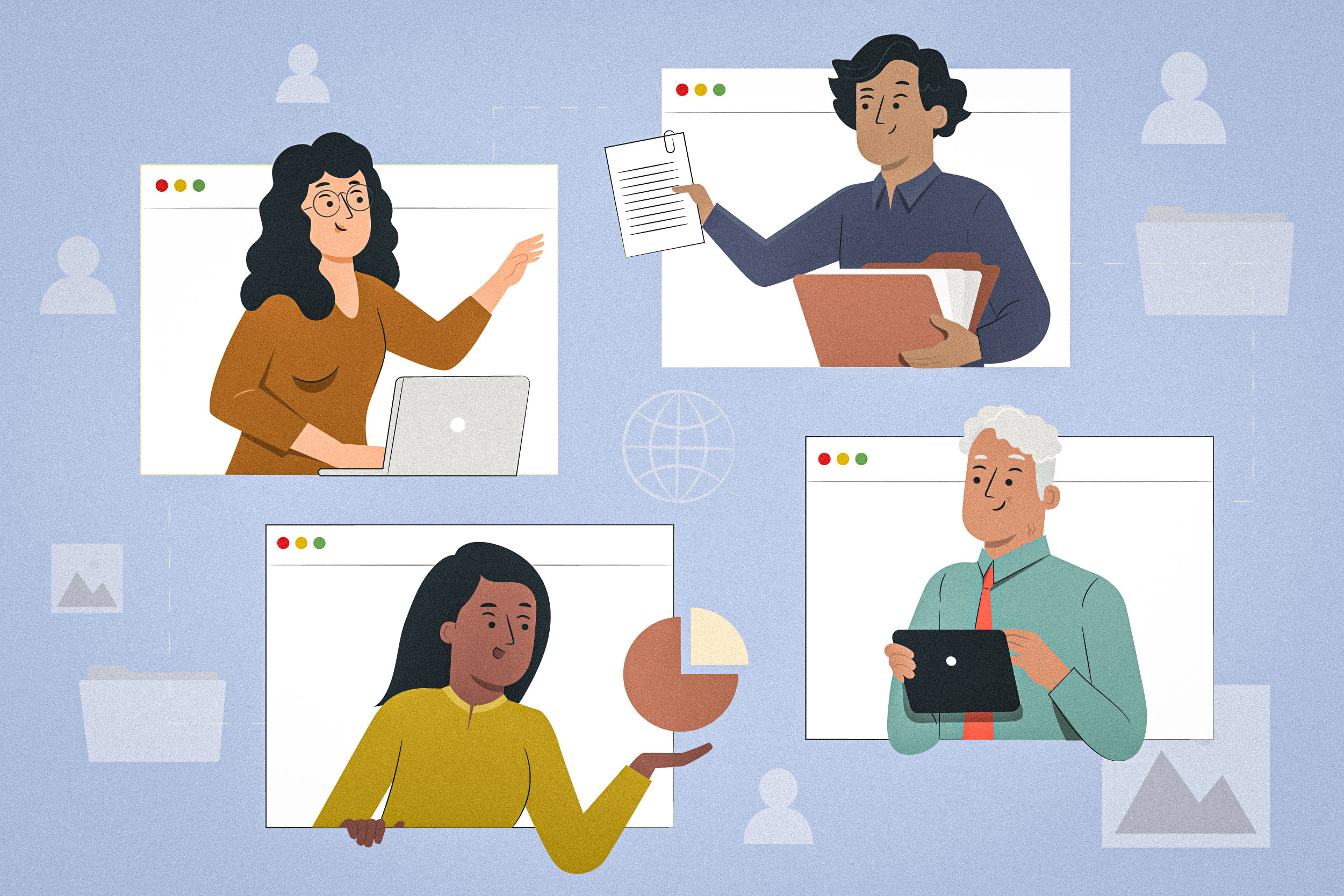How Should Government Training Institutes Select an Instructional Design Agency?
Finding an Instructional Design agency that is highly skilled, cost-effective, easy to work with, and is reliable seems like a deceptively simple task. But how do you properly vet a potential agency? What should you look for in a partner to ensure your needs are met, with your budget, timeline, and quality all intact?
Instructional design (ID) is not as new as some might think. It started in World War II when we needed to quickly and effectively train troops, which is terms like boot camps are still used today. Since then, ID has had a presence in the government, business, and industries however, it attained an accelerated acceptance with the onset of internet and computer-based training to become a widely accepted way to not only train but also assess impact and analyze the gaps and dovetail it with other organizational initiatives such as managing personnel and their competencies and fitment to roles.
Over the last two decades, it has been the industry and consultancy firms that have had a faster adoption of the use of e-learning and other training interventions largely due to easy access to resources. On the other hand, public officials have been lagging due to financial constraints, centralised resources and training mechanisms, lack of understanding of infrastructure needs and inadequate training policies. Mission Karmayogi has provided a positive impetus, through its 6 pillars and objectives to capacitate all central and state training institutions, create e-resource centres, capacitate stakeholder departments in the implementation of the capacity building programmes, put forth recommendations on the standardization of the training and capacity building, pedagogy and methodology, and suggest policy interventions related to the HR practises in the government. This learning transformation that addresses the capacity building will take place through a comprehensive online platform - iGOT Karmayogi. iGOT Karmayogi aims to provide online, face-to-face and blended learning and manage lifelong learning records of the officials.
We cannot deny the fact that the Indian government and institutions have been working to reform the existing model. However, there are still several unique needs that government institutes have which need to be taken care of. These include, a strict and long drawn out RFP and Procurement Processes (including working through portals GEM). Lack/Limited Staff that understands training design and development processes, especially modern technology based tools and delivery mechanisms. A very large number of target audience can be a potential source of stress, in addition to audiences in scattered and remote areas. Additionally, high stakes and visibility in making a government reform can pose challenges of its own.
Several training institutes now are using a unique approach to provide training internally by ‘outsourcing’ their training requirements. This they have found is a way that reduces costs, improves productivity and quality of training by collaborating with training experts in a variety of ways. However, it can be perplexing for an institute to select the ‘right’ Instructional Design Agency.
To get started, here are 5 things to consider when evaluating an agency.
First Things First
When you get into evaluations of instructional design agencies you are likely to be swamped by product demos that have amazing animations, professional audio, gamification, and maybe even augmented reality. Enjoy the variety and the possibilities but step back to distinguish between Instructional Design and media production.
No doubt, media that is created well is extremely effective in creating a good experience but it wouldn't last long if the instructional design is ineffective. Much like a movie with brilliant actors and locale but no real story to tell.
Instructional Design can provide value to?
And how is it different from production of e-learning content?
Simply put, instructional design is a process that identifies the skills, knowledge, and attitude gaps of a specific set of learners and then creates learning experiences to close this gap, based on instructional theory, learning behaviours, psychology and best practices.
It is to be noted that Instructional Design does not include using softwares, programming, learning management systems, creating animations and graphics, or recording audio. Instructional design needs to stay focused on the stated performance or learning gap and find the best possible ways to solve them.
The role of an Instructional Designer to use the instructional design models such as ADDIE, Merrill's Principles, Gagne’s 9 Events and learning theories to provide a systematic approach for crafting effective and efficient learning solutions that meet the needs.
What to Ask When Evaluating and Selecting Agencies?
It is surely difficult to know what to ask for when there is a slick looking e-Learning and glossy workbook samples in front of you or there are heavy weighted brand name dropping. 9 times out of 10, awed by the glitz, the thoughts stray to this looks attractive and how much will it cost. No doubt, cost effectiveness is an important parameter to consider but there are other queries that you must focus on. For example:
- What was the learning or performance gap you were trying to solve?
- How does the design of this piece contribute to solving those issues?
- What was the approach taken to gather all the content and understanding?
- Were any Subject Matter Experts consulted for content creation? Who in the team wrote the content?
- Was any instructional design process followed?
- Was your team engaged for only ‘production’ of the eLearning materials?
- How is the effectiveness of eLearning/training materials determined?
- Did you get a chance to measure the effectiveness of learning?
- Was there any behaviourial or performance enhancement observed?
Then come to the other routine questions about the project on-time and on-budget completion, challenges encountered and overcome.
You could also ask close questions about how the duration arrived at, where there any practice exercises and reflection exercises included?
And then, finally come to the value-add question; How did you or the Agency value add to the material in this context?
Check the Track Record
It's important to also know who the Agency has been working with. Well known names in both the private sector and the social development space are good to have. These are likely to be backed by good wallets and also have the acumen to weed out and select competent agencies. Do feel free to ask for references, testimonials as just because an Agency has worked with some good companies and organizations does not guarantee that those engagements were satisfactory.
Focus on the 3 Ps
Purpose. Process. People.
Almost all issues that anyone has ever had with Instructional Design Agencies is caused by deficiencies in one of 3 categories – Purpose, People and Process. Focus on these.
The role of People cannot be overemphasized. Instructional Design and Development is a result of a team working together. Instructional Designers, Graphic Designers, eLearning Programmers, Learning Management Technologists, Project Managers, and Quality Assurance Experts must all work together to be successful.
Look closely for an Agency that has a clearly-defined project management process. The Agency in question should also have the necessary setup to support the process. Some of questions that must be answered are how are the assets created, stored, and blacked up? How are heavy files exchanged? Is there a secure collaboration tool in place? Project Management practices should not be neglected because all through the engagement, you’ll need status updates, periodic reviews and discussions.
With people and processes in place, now it is easier to focus on the ‘Product’ and assure that it the best that can be created.
Conclusion
In addition to all of the above points, there is a likelihood that knowing the costs and budgets available for not only for the creation of content but also its delivery can help make realistic and efficient decisions. So, it's important to explain your goals and vision to the agency, and ask if they have experience producing effective products within that budget.Keep an eye open on how they respond to the requirements. Do they arrive with a solution they want to sell, or do they first listen to your needs, understand your technical environment, and gather information on your learning objectives, pain points, infrastructure and audience? The bottom line is, that there are some many variables and line items to look out for that making a choice is tough. So, in situations such as this, look for collaborators that are ready to work directly with your ministry, department or institute to support or assist in the development or execution of your strategy.



Add new comment